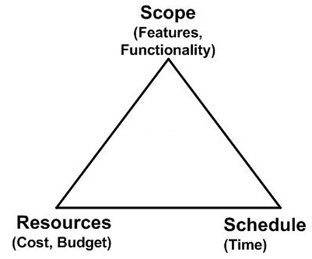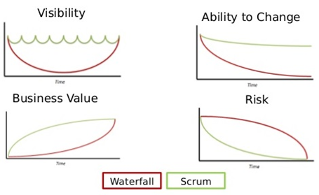
Our Operations
Our operations’ motto is: Semper Gumby
.
The world runs in real-time, but contractors in infrastructure projects run in batch. Our teams can rapidly charge up the design-build pipeline and give our clients 'real-time' access to the design product.
Our core strategic principle -to the challenge of redesigning our markets’ supply chain- is to meet clients’ need for speed; need for informed project decisions at the earliest responsible time.
We have observed the paradox that the world runs in real-time, but contractors in infrastructure projects run in batch. Every few weeks or months when they receive a part of the design data they adjust. We ought to put the very small batches of design data that the contractors use into a big stream and shift through those data the moment they are created and make immediate, incremental adjustments to the construction process.
To achieve our strategic goals, our teams have adopted a Product mindset and not a Project mindset (that’s why we call our project managers, Agile Product Managers –APMs.)
 In the project mindset success upfront defined inside out of the triangle as: Scope, Time and Budget. This mindset leads to less business involvement and to more task management.
In the project mindset success upfront defined inside out of the triangle as: Scope, Time and Budget. This mindset leads to less business involvement and to more task management.
In the Product Mindset success continuously driven by business metrics outside in the triangle as: Faster revenue and Construction cost savings per design feature for the client. This mindset leads to more design creativity, less construction waste and continuously rapid design releases taking into consideration client’s immediate feedback.
With the traditional (waterfall) design development for transportation infrastructure projects the Realization of Value for our clients happens at the end of the queue: Requirements - Design development - Quality assurance – Implementation.
 With the agile design development the Realization of Value for our clients comes much-much earlier through the loop: Early release - Feedback - Learn – New release.
With the agile design development the Realization of Value for our clients comes much-much earlier through the loop: Early release - Feedback - Learn – New release.
To achieve early Realization of Value for our clients, we apply a 3-layer approach combining 4 well-aligned operating frameworks. Through the layers, both uncertainty and ambiguity are reduced. We apply Design Thinking and FEED for What & Why to design, and Scrum & CCPM for How & When to design.
In the outer first layer, we apply Design Thinking and Frond-End Engineering Design (FEED) across the business. The main purpose of our firm is to ensure that we are delivering a great experience across all client touch points. This requires a firm-wide focus on the client. It is the ideal framework for us to use, because it focuses on developing deep empathy for clients and creating solutions that will match their needs - as opposed to just dreaming up and delivering technology and transportation designs for designs’ sake. In the middle second layer we use Scrum. We choose to be approximately right rather than precisely wrong. We apply iterative agile project management and we disapprove waterfall project management.
We have adopted the Agile Manifesto principles. We are uncovering better ways of developing transportation designs and we have come to value:
- Individuals and interactions over processes and tools.
- Constructible and performance-based designs over criteria-based designs and comprehensive documentation.
- Client collaboration over contract negotiation.
(Since designs are intangible, it is difficult to predefine an unchanging view of what should be designed. We want to "do the right thing" and not "being right".) - Responding to change over following a plan.
(To give to our clients a sustainable competitive advantage.)
In the inner third layer and inside each Scrum sprint we apply Critical Chain Project Management (CCPM) and give emphasis to resource dependencies, to identification and insertion of buffers, and to search for a good enough
solution -not for the optimum solution-, since we have learned that the inherent uncertainty in estimates is greater than the difference between optimum and good enough
.
Tags: for clients